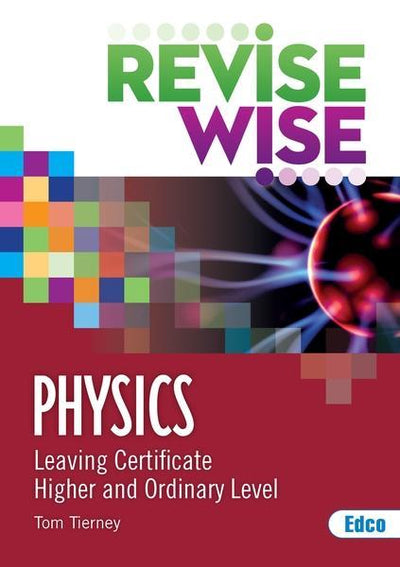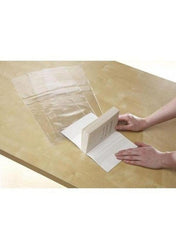Leaving Cert Physics is the most mathematical of the sciences, with many exam questions requiring you to solve a problem using learnt formulas. In preparation for the Physics Leaving Cert, it is important to learn the necessary definitions by heart, and the experiments should be studied carefully. It can also be extremely helpful to look through past papers and sample questions to familiarise yourself with the exam structure.
In this guide, we will explain how the Leaving Cert Physics exam is structured and what you can expect on these papers. We’ll also highlight some study tips and resources to support your revision for this subject.
Click on a link to jump to that section:
The Leaving Cert Physics exam
Leaving Cert Physics is studied at the Ordinary and Higher levels. For the 2022 Leaving Cert Physics exam, there is a total of 304 marks, instead of 400 marks. At the Ordinary and Higher levels, the exam is split into two sections: Section A (80 marks or 30% of the total), and Section B (224 marks).
In Section A, you will be required to answer two questions from a total of five, instead of the usual three questions from four. There are 40 marks available for each question, for a total of 80 marks in this section.
In Section B, you will be asked to answer four questions from a total of nine, instead of five questions from eight, as in previous papers. For the first question in Section B, you will be required to answer eight out of twelve short questions, providing you with slightly more choice than the usual ten short questions. For Section B, each question carries 56 marks, for a total of 224 marks in this section.
What to expect in Leaving Cert Physics papers
Section A
At the Higher and Ordinary levels, Section A of the Leaving Cert Physics exam papers will feature experiments. There are 25 mandatory experiments, and these will be based on the experiments that you have studies throughout your Physics course.
You will be given a set of results and will be asked to do some of the following:
-
Draw a labelled diagram.
-
Explain how the values were obtained.
-
To calculate some quantity (e.g. Specific Heat Capacity) or to verify a Law (e.g. Conservation of Momentum, Snell’s Law etc).
-
Some shorter questions on sources of error, precautions etc in relation to the performance of the experiment.
-
At least one of the questions will require a graph to be drawn. In such cases the slope of the graph will usually have to be calculated. The significance of the slope of the graph is determined by comparing it to a relevant formula (which links the two variables on the graph).
There are 80 marks available in Section A, which contains five questions—you will only need to do two of these, as they are each worth 40 marks.
Section B
Section B will cover topics including mechanics, light and sound, electricity, heat, mixture, and science, technology and society. Section B is worth 224 marks, and there are nine questions in this part of the paper. You will only have to answer four out of nine questions, instead of five out of eight, as in past papers.
The short questions in Question 6 of Section B will mainly feature simple problems and definitions. It is difficult to be perfectly predict the types of short questions that may come up – however, there are general patterns from previous exams that can give some insight into what to expect. For example, in the 2021 paper:
-
Question 7 was about Newton’s laws of motion/Mechanics
-
Questions 8-10 were based on Light and Sound, Electricity and Heat
-
Question 11 was about Modern Physics
-
Question 12 was one of the Options
-
Question 13 was Science, Technology and Society (STS) and was split into two parts (A and B, each made up of seven short questions) of which students had to answer one but not both
-
Question 14 was a mixture of topics, made up of four parts (A, B, C and D) each with a number of short questions. Students only had to answer two of these parts.
Each question in Section B is worth 56 marks, so it is important to revise all of the potential topics that may come up in this section.
How to revise for Leaving Cert Physics exams
In tackling the Leaving Cert Physics paper, the preparation that you put in beforehand is vital. To be a successful learner you need to revise many times, practice using the information so that you will remember it and to focus on meaning and understanding.
Revising Section A
For revising Section A, the best strategy here is to go over the experiments from past papers - you will quickly notice how repetitive they become. You should study the experiments carefully – we recommend using the Physics Laboratory Manual during your revision.
When revising Section A, make sure that you can do each of the following for every experiment:
-
Draw a labelled diagram of the experimental set-up, including all essential apparatus. The first step in the procedures should then read “we set up the apparatus as shown in the diagram”.
-
Describe how to obtain values for both sets of variables • Describe what needs to be adjusted to give a new set of data.
-
Say what goes on the graph, and which variable goes on which axis.
-
Know how to use the slope of the graph to obtain the desired answer (see below).
-
List two or three precautions; if you are asked for two precautions, give three - if one is incorrect, it will simply be ignored.
-
List two or three sources of error.
Use sample and past exam papers to help you get a feel for the types of questions that are likely to come up. Revision booklets such as Revise Wise provide useful revision tips, exam questions and expert sample answers to prepare you for your paper.
Revising Section B
Section B features a large variety of potential topics, so the best strategy for revision is to break your revision down into chunks according to the different topics on the Physics syllabus. This will prevent you from feeling overwhelmed and cramming everything at once.
Ensure you revise the relevant definitions for Section B, and use mnemonics to support knowledge recall. Visual cues and aids may also be helpful if you struggle to memorise large sections of textbooks.
Edco Physics exam papers
Edco Physics exam papers are available for Higher and Ordinary level students to revise the subject and learn how to earn as many marks as possible on the final exam. As well as providing sample and past exam papers, these books include up-to-date guides to achieving better grades and exam paper analysis charts.
Other resources for revising Leaving Cert Physics
Revise Wise – Leaving Cert – Physics - These books have full-colour designs and are packed with revision notes, tips and guidance which has been written by subject experts. They include graded exercises and detailed solutions to support the development of your skills from basic to advanced.
Essentials Unfolded – Leaving Cert – Physics– Higher Level and Ordinary Level - Each topic in these books has a dedicated single or double-page spread. Text is kept to a minimum and diagrams are clear and well-labelled. Keywords and definitions are highlighted for convenience and accessibility.
Edco Physics Plus - Higher Level and Ordinary Level - Edco Physics Plus is a new, exam-focused Leaving Certificate Physics textbook with online student tests and assessment tracker. This textbook contains up-to-date material presented in clear, concise and easily understandable language.
Physics Extra! - Leaving Cert - Higher and Ordinary Level - Physics Extra! Contains course material in a concise, understandable and student-focused book. It contains all the information you require, in sufficient detail, to be fully prepared for your examination.
Less Stress, More Success – Physics Leaving Cert - Less Stress More Success gives you all you need to get the best results you can in your Physics exam. Your complete course condensed, organised and prioritised, in full-colour, making facts stick and revision easier.






